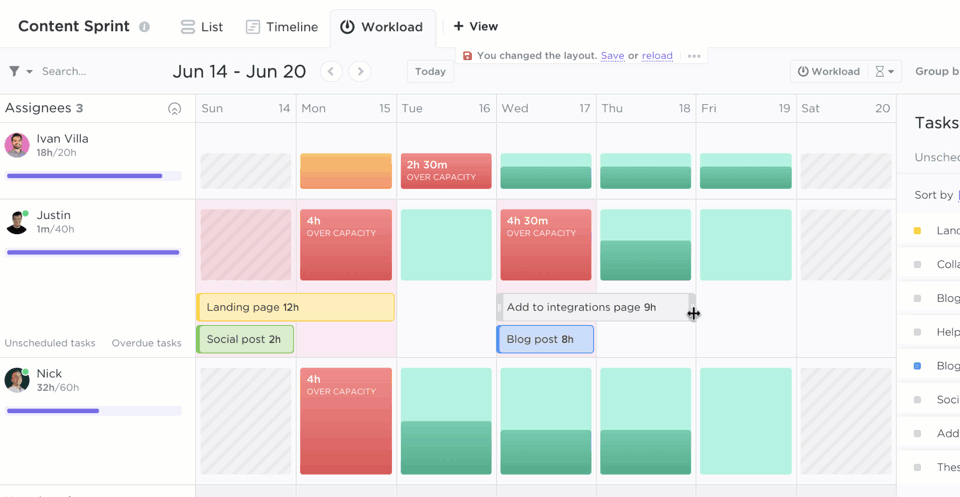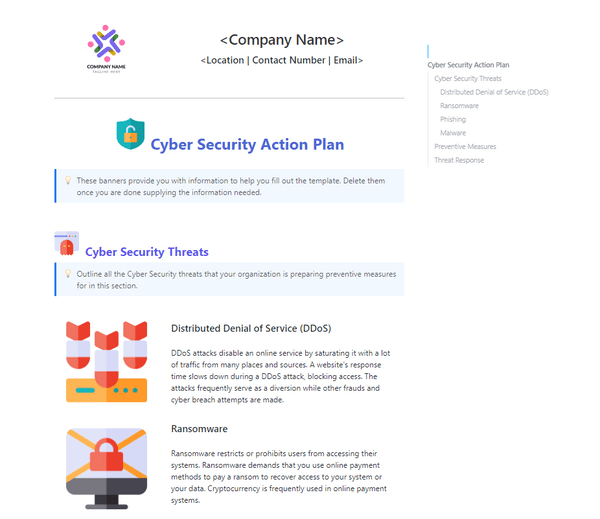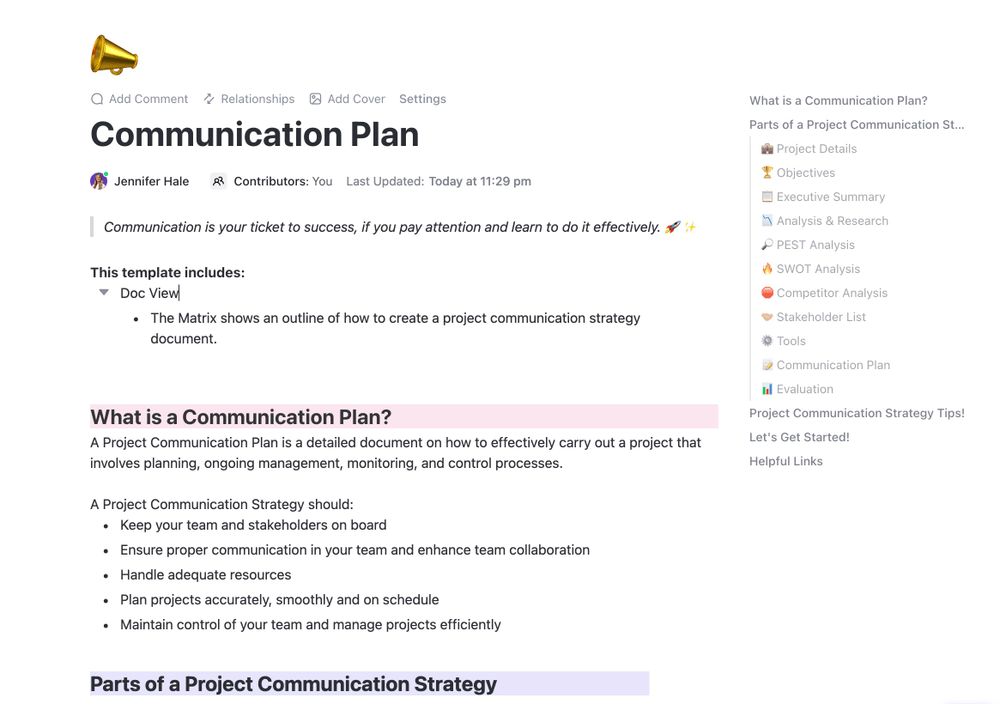

In business, the only constant is inconsistency.
Whether it’s natural disasters, cybersecurity breaches, or supply chain disruptions, unexpected events can strike at any time. And this isn’t simply alarmist talk—obviously, business risks can pop up anywhere, but you can avoid so much with a general backup plan.
It’s why developing a contingency plan is essential for every organization. However, it takes knowing what to include, how to create proactive measures, and how to have this plan ready at any time so you maintain normal operations.
And that’s where this guide comes in. 💪
Let’s walk through the process of contingency planning to help your team navigate unforeseen challenges with confidence. Here’s how to start safeguarding your business against the unpredictable.
What is a Contingency Plan?
A contingency plan is a proactive strategy designed to help businesses prepare for potential risks and disruptions. It outlines the necessary steps to lower potential damage, ensure your business operations continue, and that an organization can recover from its biggest risks or unexpected adverse situations.
Business contingency plans understand the key risks that could derail an entire project or business continuity. Typically, contingency planning relies on business impact analysis to determine the biggest risks and potential setbacks. This allows companies to proactively create a backup option from an original plan.
Benefits of Having a Contingency Plan
From weather-related disasters to data breaches, contingency planning makes all the difference when the unexpected occurs. There are plenty of reasons to create contingency plans—for obvious and not-so-obvious reasons.
Here are some of the benefits of contingency planning you might not realize:
1. It keeps damage and losses in check
Having a solid contingency plan means you’re ready to tackle whatever curveballs life throws at your business. And the best part? It minimizes the impact these surprises can have on your business. For example, it could be financial, operational, or reputational risk management to keep damage and losses to a minimum.
With detailed contingency plans in place, you set yourself up to stay strong, no matter what.
2. It allows companies to keep business as usual—even when it’s not
A lot of businesses operate on the model that everything runs perfectly—minus a few hiccups here and there. But how do organizations plan around unpredictable disasters from weather or other emergencies that could break your supply chain?
You could panic—or have some relief knowing the contingency plans you created have a detailed backup plan to maintain business continuity—so everything remains running smoothly. Contingency planning allows you to adapt to whatever comes your way and keep serving your customers with minimal interruption.
Now that’s what you call stability.
3. It helps businesses bounce back in no time
Let’s be real—the faster you recover from an unexpected event, the better. Your contingency planning process helps you identify what you need to do to get back on track ASAP.
The result? You save time and resources and avoid any extra headaches that might come from a prolonged disruption—including losing that customer base you’ve worked so hard to grow.
4. It makes it easier to win over customers and keep them
Here’s the thing—your customers and key stakeholders want to know you’ve got their backs. When you’ve got a business contingency plan at the ready, you show customers you’re serious about maintaining top-notch service and reliability.
It’s a rock-solid way to build trust, foster customer loyalty, and show that your business operates no matter the situation—so you can focus solely on what matters most.
How to Create a Business Contingency Plan: A Step-by-Step Guide
Ready to build your own contingency plans? Follow these seven steps to ensure your business is prepared for the unexpected.
1. Assemble a contingency planning team
Gather a diverse group of employees and stakeholders who understand your business and provide valuable insights into potential risks and solutions.
This team should include representatives from different departments and levels of responsibility, ensuring a well-rounded perspective. Remember, a diverse team spots potential blind spots better and brings creative problem-solving ideas to the table.
2. Leave no stone unturned
Identify possible disruptions—natural disasters, cybersecurity breaches, personnel issues, or other hazards—and assess their potential impact on your business. Take a deep dive into your operations and consider both internal and external threats.
Consult with your team and external experts if needed, and create a comprehensive list of risks that could affect your business continuity.
3. Tackle the biggest fish first
Rank the identified risks according to their potential consequences and the likelihood of them actually happening. Focus on high-impact, high-probability events for your contingency plan.
This prioritization process will help you allocate resources effectively and ensure you’re tackling the most critical threats first. Remember, it’s essential to strike a balance between addressing immediate threats and preparing for longer-term risks.

4. Plan for action—not a reaction
For each risk, create a detailed plan outlining the steps your business will take to mitigate the threat and minimize its impact. These response strategies should be clear, actionable, and tailored to the specific risk at hand.

Better yet, don’t start from scratch. ClickUp provides a done-for-you contingency template that you can fill in and share with your whole team. As you continue to flesh out your contingency plan, consider both short-term and long-term solutions, and make sure your plan is flexible enough to adapt to changing circumstances. The more specific your action plans, the better prepared your team will be.
5. Establish communication and keep the lines open
Determine how the information will be shared and establish guidelines for coordinating response efforts among team members and stakeholders. This might involve setting up dedicated communication channels, designating points of contact, or implementing a centralized reporting system.
It might even be worth adding it to your onboarding process for employees. The goal is to ensure that everyone involved in executing the contingency plan is on the same page.
6. Train employees and raise awareness
Educate your employees about the risks you’ve identified and make sure they’re familiar with the contingency plan. Conduct regular training sessions and drills to keep everyone prepared.
Make sure your team understands their role in the plan and is equipped with the skills and knowledge necessary to execute their responsibilities. Who is doing what? What are the expectations?
An informed and well-trained team is your strongest asset in navigating unexpected challenges.
7. Regularly review and update the contingency plan: Stay ahead of the curve
Stay proactive by periodically reviewing your contingency plan and making necessary updates based on changes in your business environment, new risks, or lessons learned from past incidents.
Schedule routine check-ins to reassess potential risks, evaluate the effectiveness of your response strategies, and make any necessary adjustments. A contingency plan is a living document—keep it fresh and relevant to stay prepared for whatever comes your way.
Elements of a Contingency Plan
Creating comprehensive contingency plans takes several crucial elements—think of them as the building blocks for a solid foundation of preparedness. Let’s explore each of these components in detail:
Risk assessment and identification: Know your threats
First things first, you need to dive deep into your business processes and identify potential threats that could disrupt your operations.
Consider everything from natural occurring disasters and cyberattacks to personnel changes and to issues with supply chains. Once you’ve compiled a list of risks, assess their potential impact on your business to determine the severity of each threat.
Risk management is all about knowing the likelihood of anything and everything that could pause your operations. Here are some common reasons for developing contingency plans:
- Natural disaster recovery (e.g., floods, earthquakes, hurricanes, tornadoes)
- Pandemics or widespread health crises
- Supply chain disruptions or shortages
- Cybersecurity breaches or data theft
- Technological failures or system outages
- Regulatory changes or legal issues
- Economic downturns or market fluctuations
- Competitor actions or industry shifts
- Workplace accidents or safety incidents
- Acts of terrorism or civil unrest
- Damage to facilities or equipment (e.g., fires, vandalism)
- Intellectual property disputes or theft
- Loss of major clients or contracts
- Reputation-damaging events (e.g., product recalls, public relations crises)
- Environmental hazards or accidents (e.g., chemical spills, pollution incidents)

Try the ClickUp Risk Assessment Whiteboard Template to collaboratively plan around all of the potential issues that could harm your operations. A visual whiteboard allows everyone to participate and clearly see the risks and strategies to address them in one space. Now, your contingency plan will look better than ever.
Prioritization of risks: Focus on what matters most
Not all risks are created equal. To make the most of your contingency planning efforts, prioritize risks based on their likelihood as well as what their consequences could be.
Focus on addressing high-impact, high-probability events first, then work your way down the list to make sure you’re tackling the most critical threats head-on to have a solid Plan B.

The ClickUp Prioritization Matrix Template aids in prioritizing tasks and projects based on their impact on users and the effort required to implement them. It’s a useful tool for assessing operational workflows and improvements, with prioritization made easy using the 3×3 matrix.
Response strategies and action plans: Be proactive—not reactive
For each identified risk, develop a clear and actionable plan outlining the steps your business will take to minimize the threat and its impact.
Remember, it’s essential to be proactive rather than reactive—having well-defined response strategies in place will help you act swiftly and decisively when faced with unexpected challenges.

For IT teams, contingency plans must include how you’ll address any cybersecurity threats. The ClickUp Cybersecurity Action Plan Template helps IT departments add crucial details to a contingency plan.
Communication and coordination: Keep everyone in the loop
Here’s an important note to keep in mind: A contingency plan is only effective if everyone involved knows about it and understands their role.
Outline how information will be shared during an emergency, and establish protocols for coordinating efforts among team members and stakeholders. For example, HR software with clear communication and seamless coordination features can be vital for a successful response to any crisis.

If you need help setting up your internal or external communication process during a crisis, the ClickUp Communication Plan Template is a must. This template provides simple steps to build an effective communication plan with easily customizable sections throughout the Doc so your contingency plan is as thorough as possible.
Training and awareness: Empower your team
Educate your employees about potential risks and the contingency plan itself.
Run regular training sessions and drills to make sure everyone is familiar with their responsibilities and prepared to act when the time comes. An informed and well-trained team is your strongest asset when navigating unexpected challenges.

Get a head-start with the ClickUp Company Process and Procedures Template to easily document and organize your contingency planning guide for the organization. This template will give you the bones of a solid plan to get employee buy-in and knowledge of what to specifically do if circumstances change.
Plan maintenance and updates: Keep it fresh and relevant
Lastly, don’t let your contingency plan collect dust. Regularly review and revise it as needed to make sure it remains up-to-date and aligned with your current business environment.
Schedule periodic check-ins to assess potential risks, evaluate the effectiveness of your response strategies, and make any necessary adjustments. A contingency plan is a living document—keep it fresh and relevant to stay prepared for whatever comes your way. 🚀

Don’t make planning any more difficult than it has to—use the ClickUp Business Continuity Plan Template and rest assured you’ve included everything. Add reassessment plans to go back and edit contingency plans based on new threats or risk you could encounter and review each year.
Contingency Plan Examples
Toyota’s Swift Response to the 2011 Tsunami
In 2011 a devastating earthquake and tsunami hit Japan, causing widespread destruction and significantly impacting businesses across the country. Toyota, a global leader in the automotive industry, was no exception. Supply chains suffered massive disruptions due to damaged infrastructure and affected suppliers.
However, Toyota’s business contingency plan played a crucial role in minimizing the impact of the disaster on the company. They already discovered the possible risks associated with natural disasters and put measures in place to address them with a solid backup plan.
The company’s business continuity planning played a huge role in quickly bouncing back. Here are some of the best examples of their plan:
Shifting production to alternative locations
Toyota’s “plan B” included an emergency response process to shift production to other facilities. When the tsunami struck, Toyota quickly relocated some manufacturing operations to unaffected plants, both within Japan and overseas.
These types of proactive measures helped maintain production levels and ensured that the company could continue to meet customer demands during the crisis.
Tapping into alternative suppliers
The event also affected many suppliers that Toyota relied on for parts and materials. To minimize the impact on supply chains, the company leveraged its extensive network of global suppliers, turning to alternative sources to procure the necessary components.
This diversification strategy allowed Toyota to maintain its production schedules and minimize late deliveries of customer vehicles.
Implementing recovery efforts
In the aftermath of the crisis, Toyota swiftly mobilized its resources to support recovery efforts. They worked closely with affected suppliers to help them restore their operations, provided financial assistance, and shared their expertise in disaster recovery.
By getting ahead of “what ifs”, Toyota demonstrated the power of effective contingency planning in the event of a major disaster.
Get Your Team Prepared With a Contingency Plan
Remember, a good offense is the best defense. That’s why contingency planning pushes you to be proactive in managing risks. By identifying potential threats and addressing them before they escalate—and keeping your plan updated—you’ll always be ready to respond effectively. It’s like having a secret weapon in your back pocket.
Whether you use one of ClickUp’s templates or create something from scratch, a contingency plan is about so much more than just preparing for the unexpected. It’s about minimizing damage, ensuring business continuity, bouncing back quickly, building trust, and being proactive.
Use ClickUp as your central space for communication, planning, and organizing essential documents. Additionally, you can rely on Whiteboards to collaboratively organize your response plans.
When you put it all together with ClickUp, you’ve got a recipe for a resilient, agile, and successful organization that takes on anything life throws its way. Give ClickUp a try today for free!



